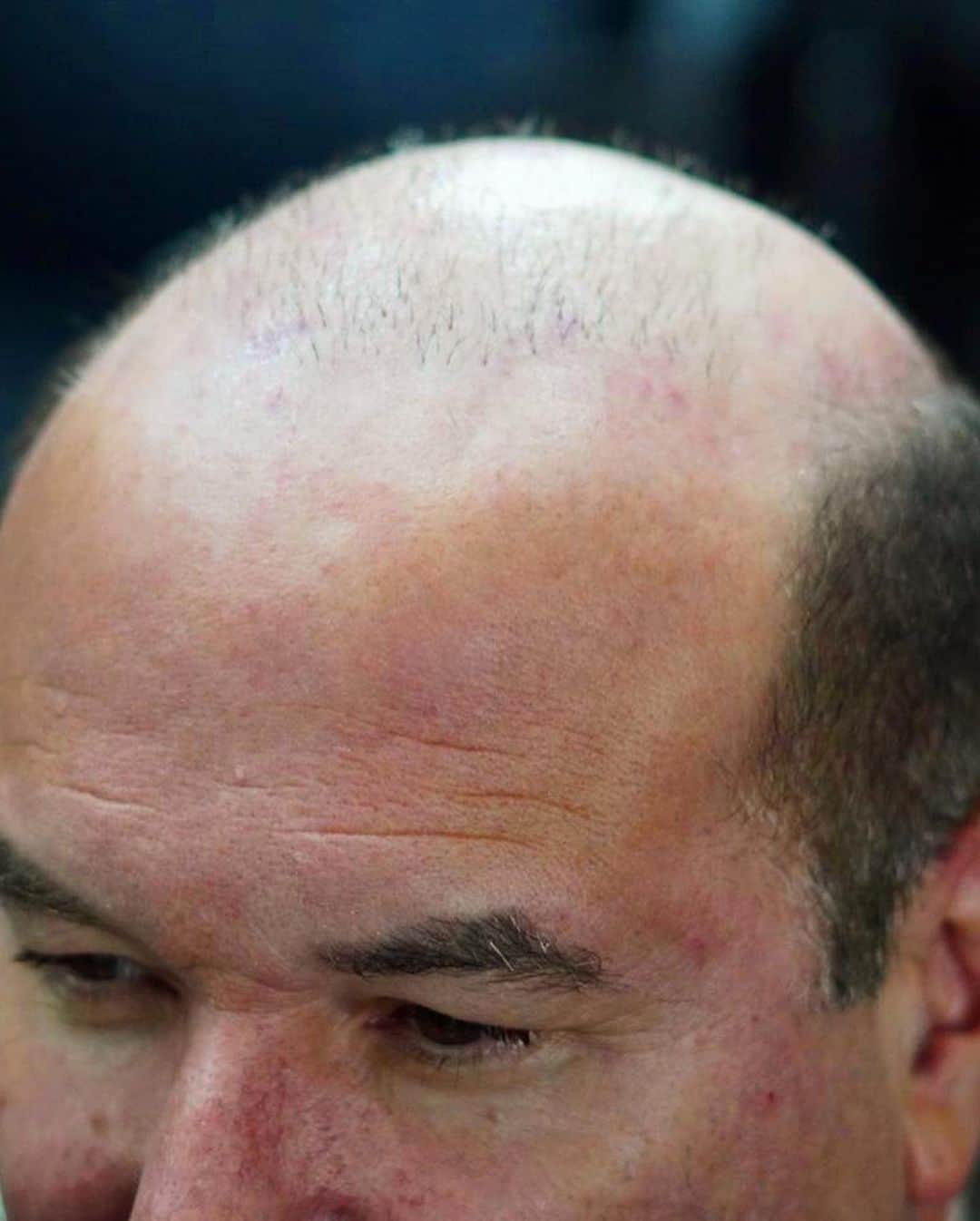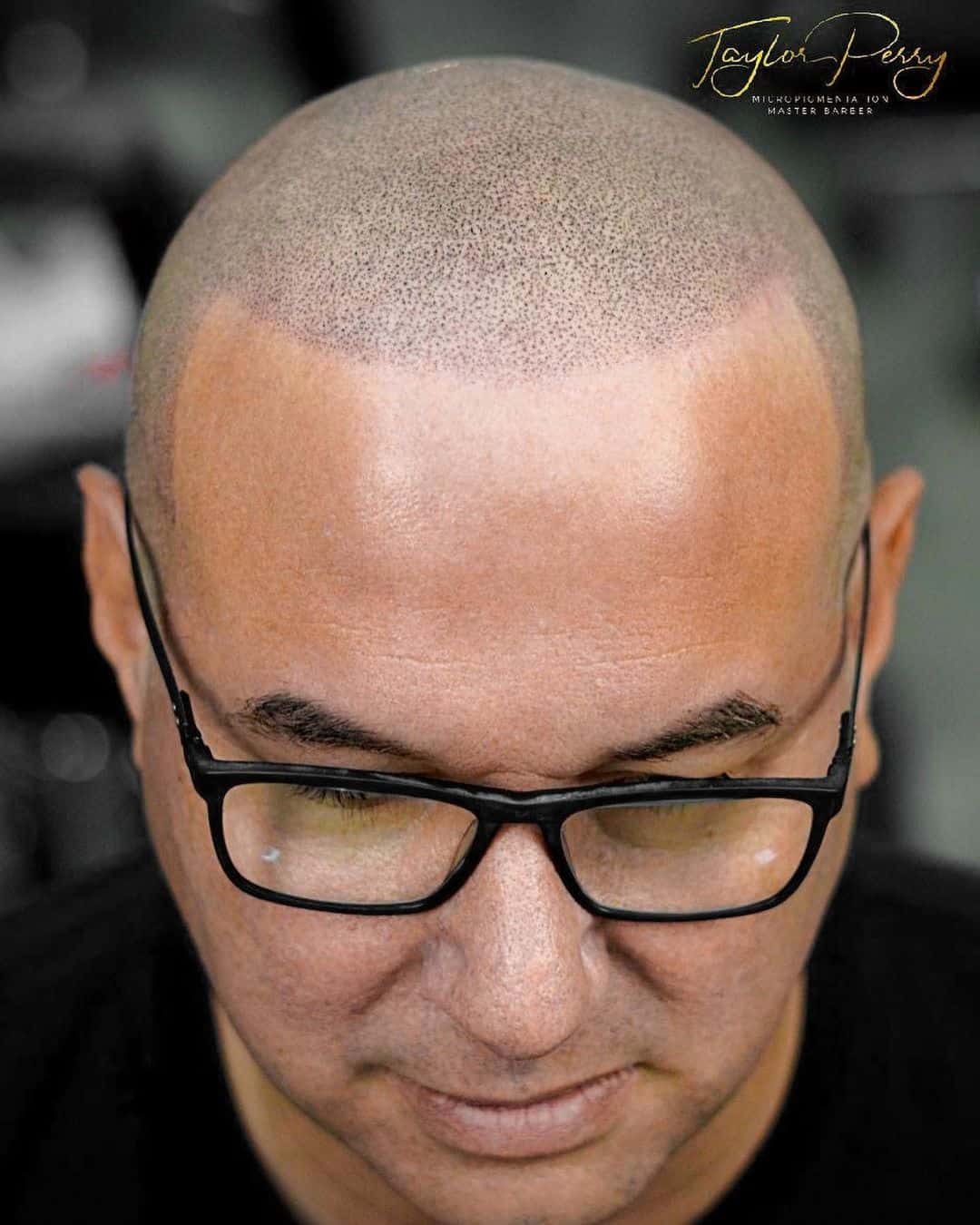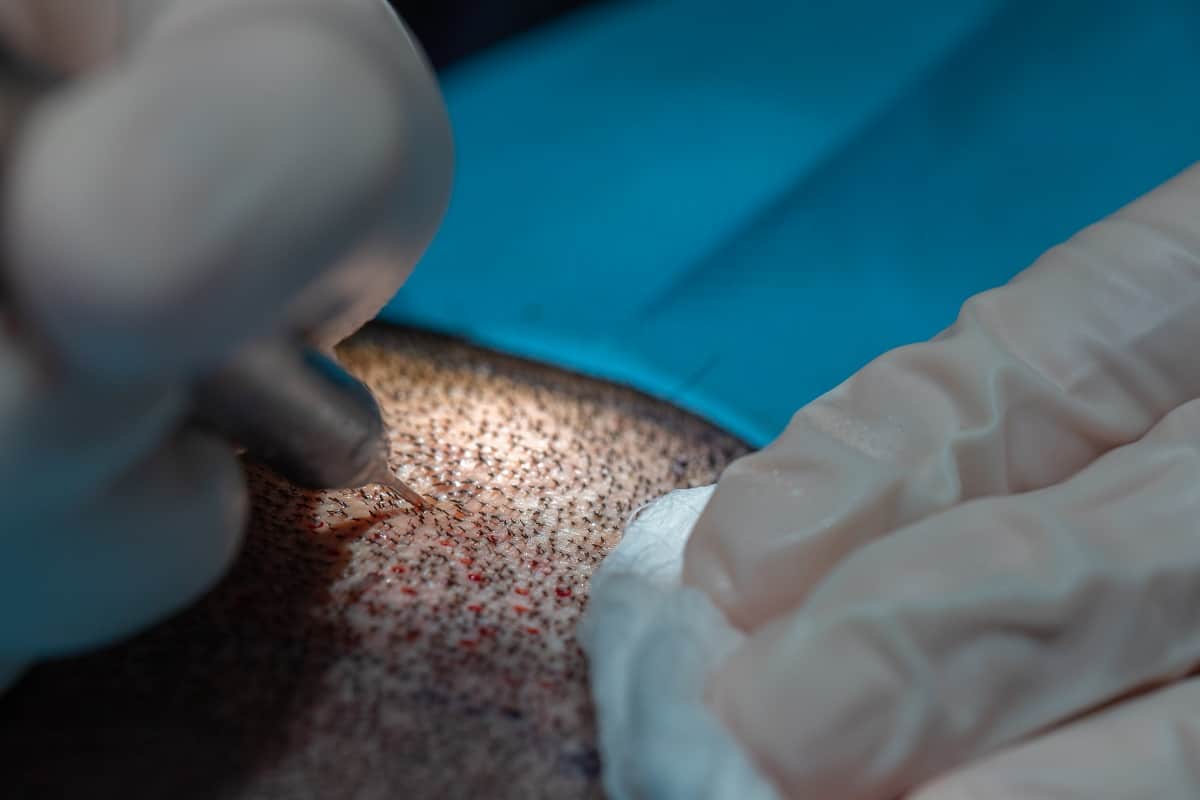Hair Plugs Vs. Hair Transplant: Which Is Best For Me?
If you ever thought about the hair restoration and attempted to do your own research you’ve probably come across two terms – hair plugs and hair transplant. Surgeons around the world popularized the former terms in the last years and decades. However, recently, the latter has grown more in popularity with hair surgeons ditching hair plugs and focusing solely on hair transplantation.
Why is that happening? Are hair plugs a flawed technique or using hair transplantation is way more effective compared to the aforementioned treatment. In this article, we want to introduce you to both terms if you’re not well-versed with the details.
These terms can often be mistakenly referred to one another and lead to wrong explanations of different terms that are used when people go to get their hair transplanted. One thing is for sure, and that is that the hair loss can feel upsetting and uncomfortable, and if there is a way to restore your hair painlessly with the right budget, then you should definitely go in that direction.
But, understanding what hair plugs, hair implants, and hair transplants are can be difficult for someone who has never looked into the terms before. We wrote this article to help you learn about these interchangeable terms and enable you to make decisions based on your knowledge in consultation with your surgeon. Read on!
Hair Plugs, Hair Implants, And Hair Transplant, What Are They?
If we jumped straight to the comparison of these three terms you’d likely be more confused than at the beginning of this article. That’s why we’ll thoroughly define all three terms that are used interchangeably and help you understand them better.


Hair Plugs
The term of hair plugs is not used the same as it was used to over the last couple of decades, which is why it’s important to define it properly now.
A hair plug is a rounded piece of implant that is inserted into the scalp. Some types of plugs would contain only one to eight units of hair. However, in some other types, a hair plug consists of up to 20 units of hair.
When people were battling balding back in the early to mid 20th century they often had plugs inserted into their scalp to prevent the balding. A small piece of the scalp would be cut away for the plug to enter it.
Even though this method is from the last century and is genuinely considered old, it’s important to note that the hair surgeons didn’t use fake hair to prevent or save individuals from the baldness. However, it wasn’t as aesthetic and it didn’t achieve the effect of natural hair that was transplanted into the scalp.
The reason for that is because the plugs would create gaps between natural hair that continue to grow from the scalp and the plugged pieces of hair, creating a fake impression that felt neither stylish nor functional. It’s worth noting that the hair color wasn’t significantly different because the plugs that were used are not made out of someone else’s hair but of the person’s hair who was getting the plugs installed.
If you have difficulties imagining what could a scalp with hair plugs look like, you can easily imagine a doll, such as Barbie, who has series of plugs like even spacing between different strands of hair, which creates a fake effect, except that it was achieved with real hair.
The fact that this approach with restoring hair didn’t feel natural, and made many people disappointed in the long term, as well the emerging of new transplantation technology, different types of implants are used.
We should also note that hair plugs are a type of hair implant, but they’re not made with fake hair. More importantly, even though this approach is outdated, there are surgeons who will still perform this procedure on people who find other transplantation techniques too expensive.
Hair Implants
Even though this article doesn’t focus on hair implants but hair plugs and transplants, we still need to mention hair implants. For one reason a plug is a type of transplant in a way, and only with a proper explanation of hair implants, we can detail the modern hair transplantation later.
So, how are hair implants different compared to plugs. Hair plugs include the insertion of real hair, most of the person whose hair is getting plugged in the scalp. Alternatively, hair implants include the implantation of synthetic hair inside a person’s scalp.
Hair implants became popular because inserting synthetic hair into the scalp meant that people who wanted to have long hair full of volume could get a long hair implant. However, it’s worth noting that this was most popular among women.
The procedure started in the early 19th century, 1820’s to be precise. At first hair implants were large but as they got smaller, and as the technology moved forward, they were also more effective compared to the large chunks of hair getting implanted. Finally, however, they’re not used today, at least not legally.
Hair implants are banned in the United States, as well as many other countries around the world. The main cause for concern is the risk of contamination and becoming infected. Someone who could be allergic to the synthetic material from the hair implant could develop a strong allergic reaction that could pose risk to their life.
With that, they’re not used among the surgeons, and more importantly, FDA doesn’t approve of using them for the aforementioned reasons.
The hair restoration technology that way developed towards natural hair transplantation methods, and now there are various hair transplantation methods that will be able to completely restore and potentially regrow your hair.
Below, we’ll talk about hair transplantation and various modern methods that are commonly used among surgeons.
Hair Transplants
As we mentioned before, some surgeons will still perform hair plugging on your scalp. For some people, it’s a cheaper way to get their hair back, although not the most aesthetic way in the process. However, the development of technology and evolvement of the entire medical system led to more sophistical approaches when it comes to hair plugs – meet the modern hair transplant methodology.
Now, hair surgeons use a different approach and remove individual follicles from the scalp in order to transplant them to your hair. That way, the transplanted hair is individually arranged in your hair making up for a completely natural look, that won’t have people doubt or question the volume of your hair.
Also, without using plugs, and removing the chunks of up to 20 hairs, the donor area of your scalp can take a breather and take all the time it needs to heal while assisting the balding areas of your hair. What’s more important, no one will notice that a certain part of your healthy-looking scalp was used to donate hair to be transplanted. It won’t be noticed and has a faster healing time than it’d have before.
For most people, the hair transplantation procedure is painless as it’s performed in local anesthesia. While the patient may be aware of what’s happening, they’re likely not going to notice it at all. The hair is moved from the donor part of the scalp to the balding site of the hair.
As we mentioned above, the procedure will likely be unnoticeable after a few days up to a week. That’s mostly because the transplantation device that pulls the hair follicles from the scalp may leave small red spots that will fade quickly as your scalp is healing.
Unfortunately, various life situations and medical conditions can lead to pattern baldness which is the key culprit behind hair loss, affected by how stressed we are, our eating habits, various medical conditions, and hormonal disbalance.
Your plastic surgeon may use different methodologies to transplant your hair but two key transplant types of surgeries are micrografts and slit grafts. When getting the micrograft procedure, the surgeon will use grafts of 1 to 2 pieces of hair follicles on a graft. On the other hand, slit graft uses 4 to 10 follicles per graft.
Another thing that is important to be kept in mind is that while this procedure may be painless under local anesthesia, that doesn’t mean that the healing times are completely effortless and won’t last long.
Those few days of up to a week of healing may still feel pain so your surgeon may prescribe some pain management medicines, as well as antibiotics that will reduce the swelling and prevent the risk of getting a bacterial infection.
Hair Plugs Vs. Hair Transplant
We mentioned that hair transplantation is a more modern, elegant, and sophisticated type of hair grafting, and it gives a much more natural look when it comes to hair restoration. It’s obvious that there are differences and that many surgeons abandoned hair plugs in favor of hair transplants.
However, we decided to list a few less obvious differences. Some of the key differences are methods used to plug and transplant hair, and we’ll detail these things below.
Hair Plugs Vs. Hair Transplant: Methodology
Both hair plugs and hair transplants have their own methods when it comes to these procedures. Of course, hair transplant methods are commonly utilized among plastic surgeons because of the natural look and overall experience for the hair, but hair plug methods are also used at times.
Two key procedures of hair plugging technology include punch graft and Mini/Micro grafts.
Punch graft includes removing cylinder-shaped skin that bears hair, using a 4mm punch. The punches differed but they could be used to plug anywhere from 12 to 30 hairs. The part of the hair would then be inserted into an area where the hair has fallen off. Unfortunately, it left customers with unnatural-looking hair.
Mini or Micro grafts consisted of cutting thin areas of donor area hair. After that, the removed hair would be stitched into the bald area. However, it’d take time to heal, and there would be an unnatural-looking scar that ruins the looks.
Mini graft would include stapling or stitching from 3 to eight hairs. However, the micrograft would see patching of up to four hair strands.
On the other hand, hair transplantation is known for two procedure methods – Follicular Unit Transplantation (FUT) and Follicular Unit Extraction (FUE.) The latter is a more popular option, but both are used today and are more effective than hair plugging techniques.
FUT technique shares a lot in common with micrografting. One strip of hair is removed while the donor site of the hair is sealed and covered up. Using a microscope, the surgeon will cut up the hair strands so that multiple hair grafts will then be placed into the head.
FUE technique is similar to FUT in the sense that holes into the scalp are punctured and donor’s hair inserted inside. The procedure itself is, however, a bit more different. The donor’s hair strands get extracted individually so that there is the minimal procedure involved, and it won’t be noticeable that the hair is stripped out of the scalp as there are no ugly scars that would reveal it.
FUE is a more commonly used technique because it gives a more natural look, which is super-important when something as sensitive as hair transplantation is done. It’s also the most researched option.
Hair Plugs Vs. Hair Transplant: Cost
Hair plugs are genuinely more affordable compared to hair transplant. However, given that their demand dropped significantly, it’s difficult to find the exact price. On the contrary hair transplantation is significantly more expensive. The least invasive procedures with minimal work done can cost from $3,000 to $5,000.
The most intense hair transplantation procedures can cost up to $15,000 to $20,000. Most insurance plans don’t cover the costs between these procedures, so you’ll likely have to collect the money on your own to get the surgery performed.
Which To Choose?
Although hair plugs are an outdated technique and most surgeons stopped applying it over 20 years ago, there are some local surgeons that will allow you to do it. FUT and FUE are two cutting-edge methods to get your hair restored, with FUE being more frequently used. Most surgeons recommend the FUE method because it’s the least possible invasive, and it allows you to maintain a natural look without scarring and weird hair layering.
With that being said, hair transplantation is definitely the right technique for you to choose, especially if you want to see effective results and fully restore your hair. Hair plugs are more like a patchwork done on your balding scalp, while hair transplantation will make it as if the baldness was never there.





